You’ve likely noticed how plants can transform a sterile room into a vibrant, living space; however, achieving that effortless natural look requires strategic planning. Whether you’re working with a sunny apartment or a shadowy office corner, your plant decor success depends on understanding both design principles and plant biology. By following these ten proven tips, you’ll learn to create stunning botanical displays that enhance your space while maintaining the health of your green companions.
Contents
- 1 Choose Plants Based on Your Space’s Light Conditions
- 2 Create Visual Balance With Plant Heights and Sizes
- 3 Mix Textures and Leaf Patterns for Dynamic Appeal
- 4 Design Plant Groupings That Tell a Story
- 5 Select the Right Containers for Your Style
- 6 Establish Proper Plant Care Routines
- 7 Consider Plant Placement and Traffic Flow
- 8 Layer Plants for a Natural Forest Effect
- 9 Incorporate Plants Into Existing Decor Elements
- 10 Master the Art of Vertical Plant Displays
Choose Plants Based on Your Space’s Light Conditions

Selecting plants according to available light is crucial for successful indoor gardening and decor. Natural light varies significantly throughout homes – south-facing windows provide bright direct light, north-facing windows offer dim indirect light, while east and west windows deliver moderate morning or afternoon sun.
Light-loving plants like succulents, cacti, and fiddle leaf figs thrive in bright spaces near south-facing windows. Medium-light plants such as pothos, philodendrons, and peace lilies work well in east or west-facing rooms. Low-light tolerant varieties including snake plants, ZZ plants, and Chinese evergreens can flourish in north-facing areas or spaces away from windows.
Match plant requirements with your space’s specific light conditions by:
- Observing sunlight patterns throughout the day
- Measuring light intensity with a light meter if needed
- Positioning plants at appropriate distances from windows
- Rotating plants periodically for even growth
- Using artificial grow lights to supplement natural light when necessary
Create Visual Balance With Plant Heights and Sizes
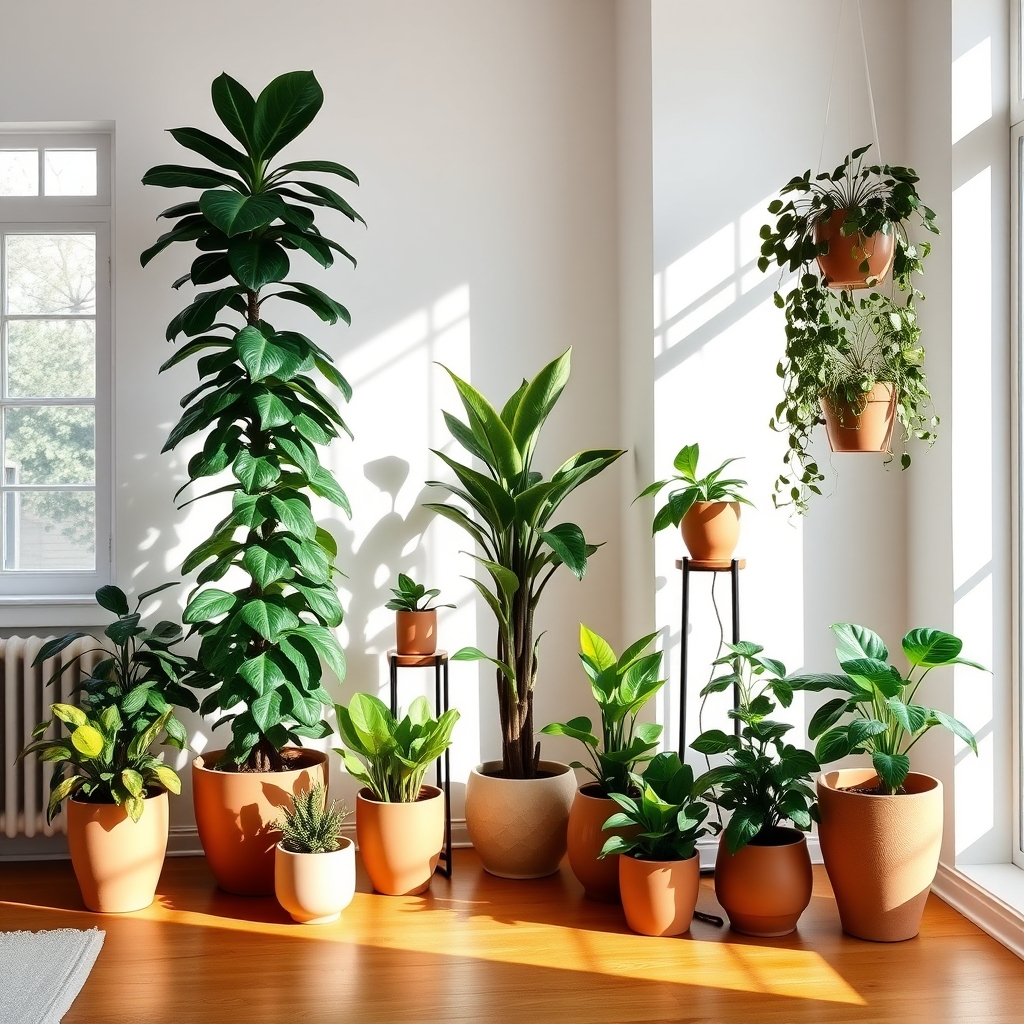
Creating visual balance with plant heights and sizes involves strategically arranging plants of varying dimensions to achieve a harmonious and eye-pleasing display. Taller plants like fiddle leaf figs or palm trees serve as anchor points, typically positioned in corners or as focal points.
Medium-height plants fill the middle ground, while smaller plants and trailing varieties occupy lower spaces and tabletops. The arrangement follows a natural visual hierarchy, similar to layers in nature – canopy, understory, and ground cover. This creates depth and interest while maintaining proportion within the space.
Mixing different plant sizes prevents monotony and draws the eye through the room naturally.
Key elements include:
- Placing larger plants behind smaller ones
- Using odd-numbered groupings
- Varying plant widths along with heights
- Considering the room’s scale when selecting plant sizes
- Balancing dense foliage with airier specimens
Mix Textures and Leaf Patterns for Dynamic Appeal

Mixing textures and leaf patterns creates visual interest and depth in plant decor by combining different foliage types.
Large, smooth leaves from monstera or rubber plants contrast effectively with feathery ferns or spiky snake plants. Round leaves paired with elongated fronds, or glossy surfaces next to matte finishes, produce engaging visual layers.
Variegated patterns alongside solid-colored leaves add further dimension. The interplay of these diverse plant characteristics prevents monotony and draws the eye naturally through the space, making the arrangement more sophisticated and aesthetically pleasing.
Design Plant Groupings That Tell a Story
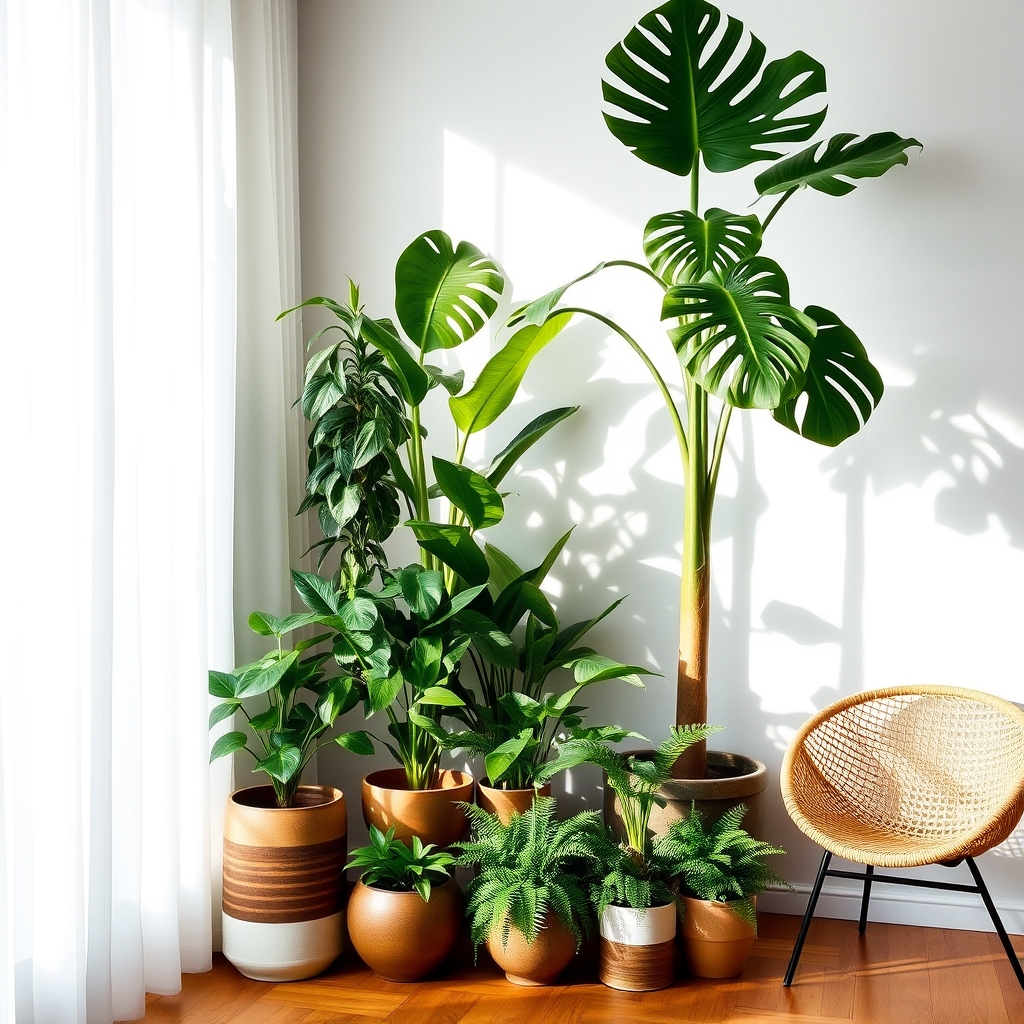
Design Plant Groupings That Tell a Story involves arranging plants to create meaningful visual narratives through intentional combinations and placement.
Plants are grouped based on shared characteristics, themes, or cultural significance to evoke specific moods or memories.
Key elements include:
- Creating height variations with tall, medium, and low-growing plants
- Using complementary color schemes
- Mixing textures and leaf shapes
- Incorporating plants with historical or personal significance
- Arranging specimens to guide the viewer’s eye through the display
- Clustering plants that share geographic origins or growing conditions
The unique feature of this approach is its ability to transform simple plant collections into engaging visual stories that reflect personal style, cultural heritage, or natural ecosystems.
These thoughtful groupings can represent anything from a tropical rainforest scene to a desert landscape, or showcase plants traditionally used in specific cultures or regions.
Select the Right Containers for Your Style
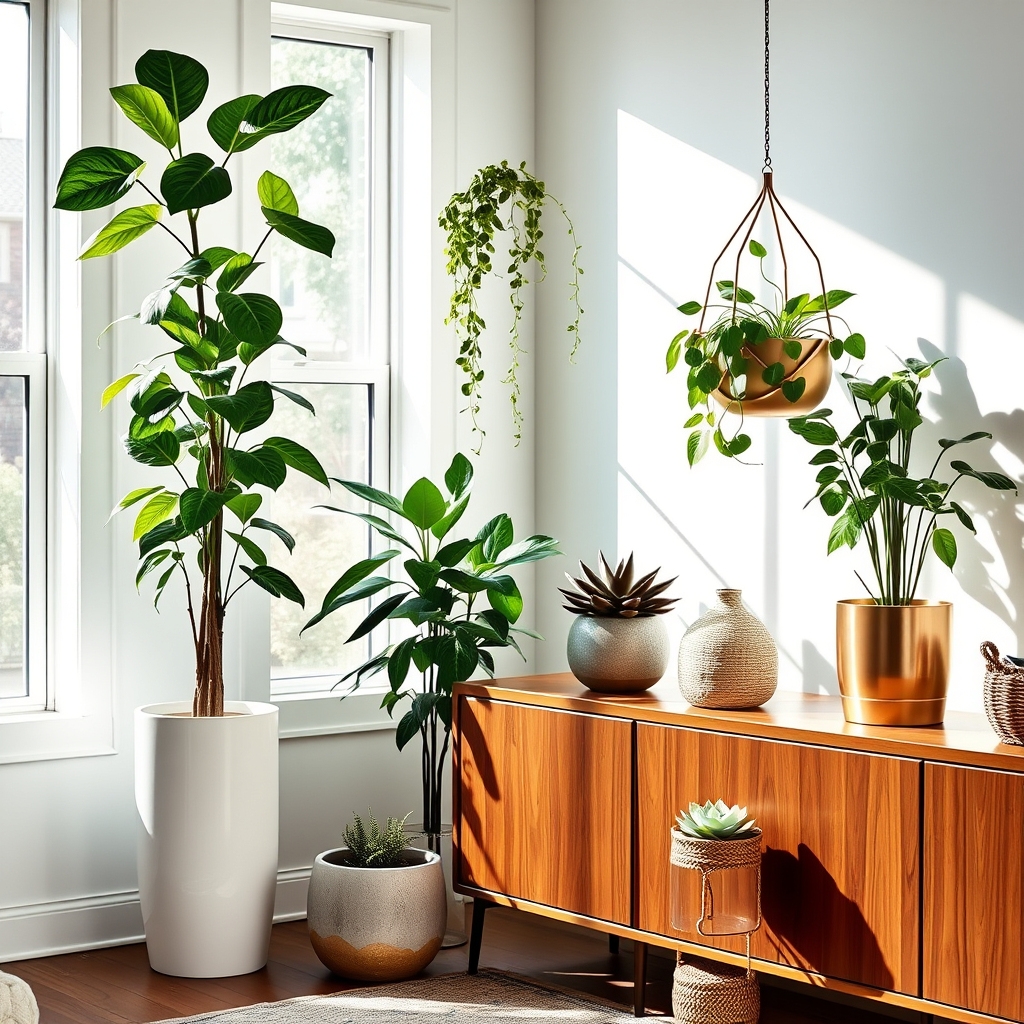
Selecting the appropriate containers enhances both plant health and interior design aesthetic.
Containers range from sleek ceramic pots and metallic planters to natural woven baskets and vintage vessels. The right container complements existing room decor while providing adequate drainage and space for root growth.
Modern minimalist spaces benefit from simple white or concrete planters, while bohemian styles pair well with handcrafted terra cotta or macramé hangers.
Container size should be proportional to plant size and room scale, with consideration for future growth. Mixed container materials and styles create visual interest when grouped together, while matching containers create a cohesive, organized look.
Key features include drainage holes, proper depth, and materials that resist water damage and staining.
Establish Proper Plant Care Routines
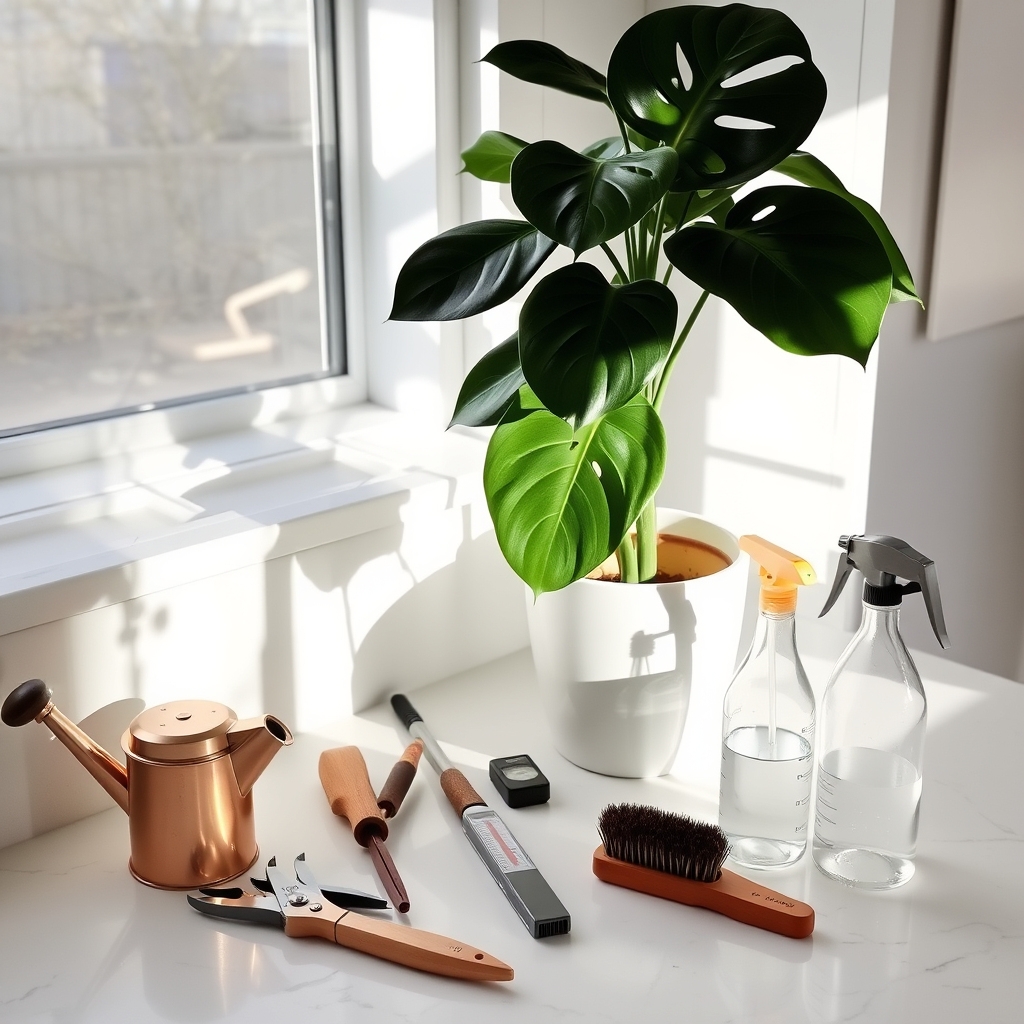
Establish Proper Plant Care Routines encompasses a systematic approach to maintaining indoor plants through regular monitoring and consistent maintenance practices. The routine includes scheduled watering, pruning, dusting, fertilizing, and rotating plants for even light exposure.
Key aspects of the care routine:
- Daily/weekly watering schedule based on plant species
- Monthly fertilization timing
- Seasonal pruning calendar
- Regular inspection for pests and diseases
- Light exposure management
- Humidity level monitoring
- Soil moisture checking
- Leaf cleaning and maintenance
This structured approach appears as a well-organized system with clearly defined tasks and timing, ensuring plants receive appropriate care throughout their growing cycles.
The unique feature is its customizable nature, allowing plant owners to adjust care schedules based on specific plant needs, seasonal changes, and indoor environment conditions.
Consider Plant Placement and Traffic Flow
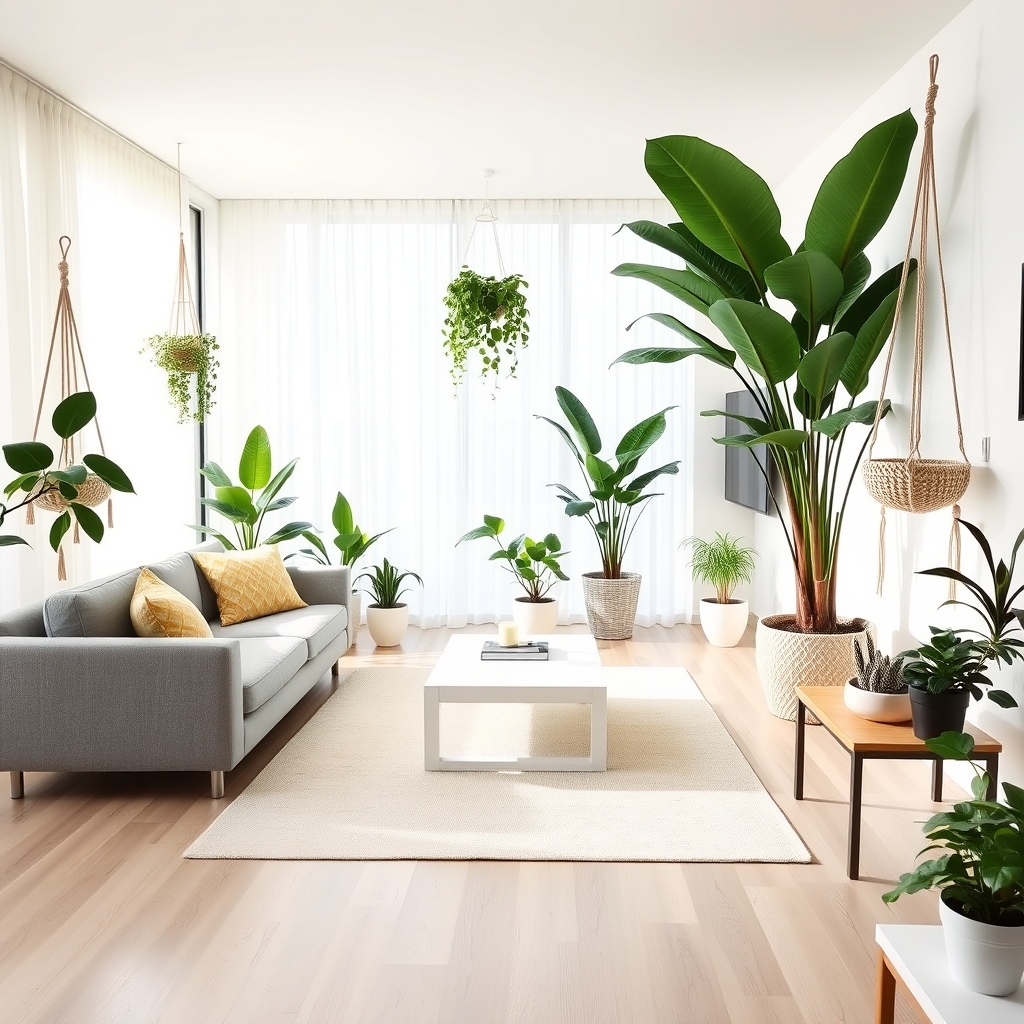
Strategic plant placement and traffic flow considerations help create a balanced, functional living space while preventing accidents and damage to plants. Key factors include:
Positioning plants away from high-traffic walkways to avoid collisions.
Creating clear pathways between furniture and plant groupings.
Placing larger plants in corners or against walls where they won’t obstruct movement.
Using hanging plants and wall-mounted options to maximize floor space.
Considering doorway clearance when positioning tall or wide plants.
Keeping delicate plants away from areas where children and pets frequently pass.
Arranging plants at varying heights to maintain visual interest without compromising movement.
Ensuring plants don’t block important features like light switches, thermostats, or air vents.
These placement strategies maintain an organized flow throughout the space while protecting both plants and people moving through the area.
Layer Plants for a Natural Forest Effect
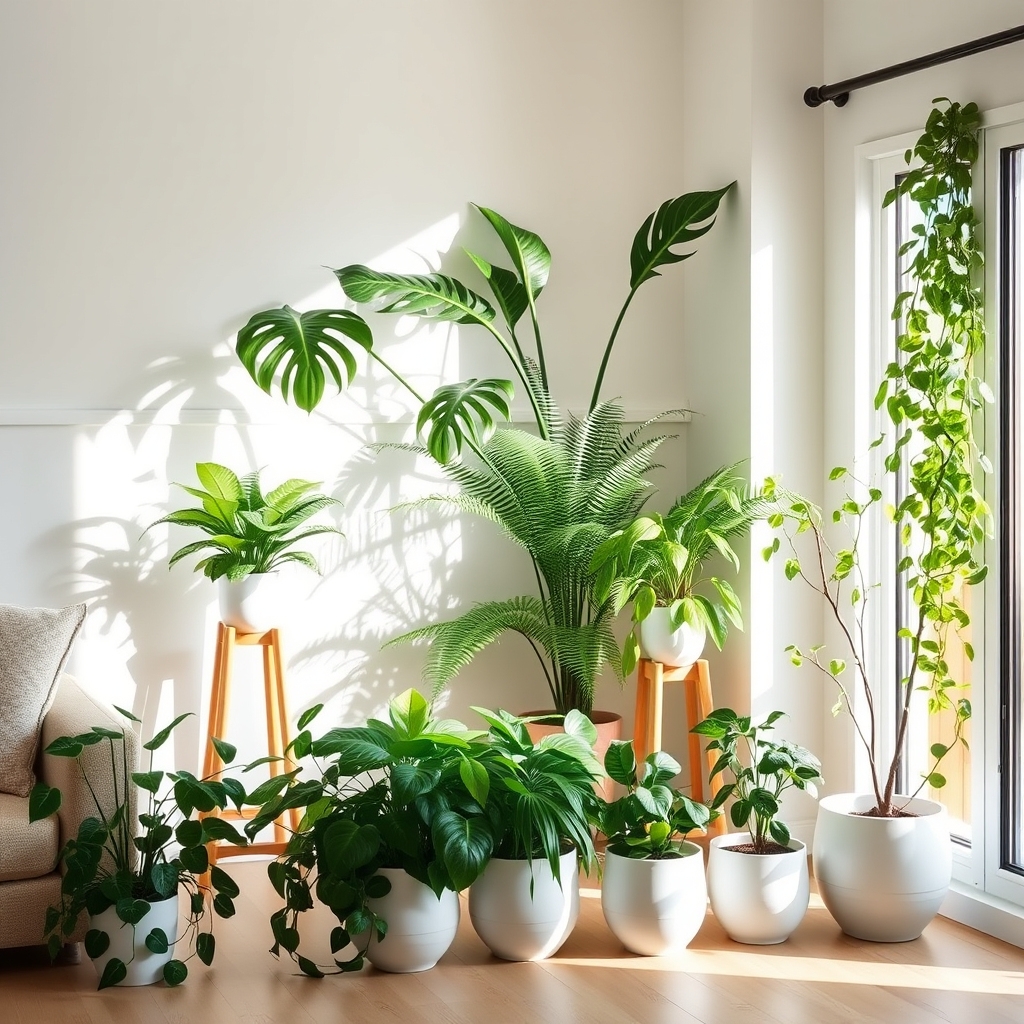
Layering plants at varying heights and depths creates a lush, multi-dimensional display that mimics a natural forest environment.
Tall plants serve as the canopy, medium-sized plants fill the middle ground, and low-growing varieties carpet the floor. This arrangement features plants of different textures and leaf sizes, with larger specimens positioned toward the back and shorter ones in front.
The technique adds visual interest through vertical depth while maximizing space usage. Key elements include positioning shade-tolerant species beneath taller sun-loving plants and ensuring adequate spacing for proper growth and air circulation.
Incorporate Plants Into Existing Decor Elements
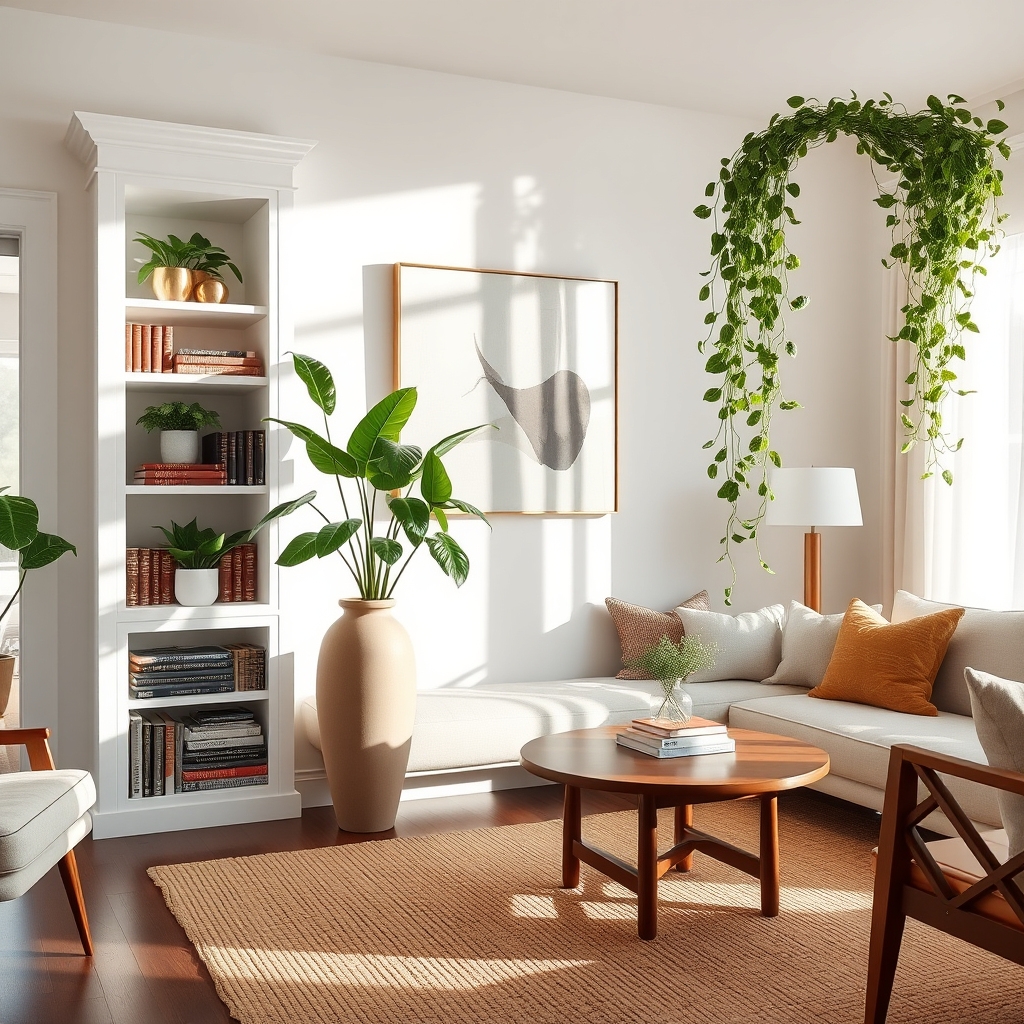
Incorporating plants into existing decor elements seamlessly blends greenery with current home furnishings and decorative items.
Plants can be nestled among books on shelves, placed alongside artwork, or integrated into table centerpieces. Trailing plants can cascade down mantels or entertainment centers, while compact specimens fit naturally into coffee table vignettes.
Wall-mounted planters can complement existing artwork arrangements, and strategically placed plants can enhance window treatments or frame doorways.
The key feature is using plants to enhance rather than compete with existing design elements, creating a cohesive look that makes the greenery appear intentional and integrated into the overall decor scheme.
Master the Art of Vertical Plant Displays
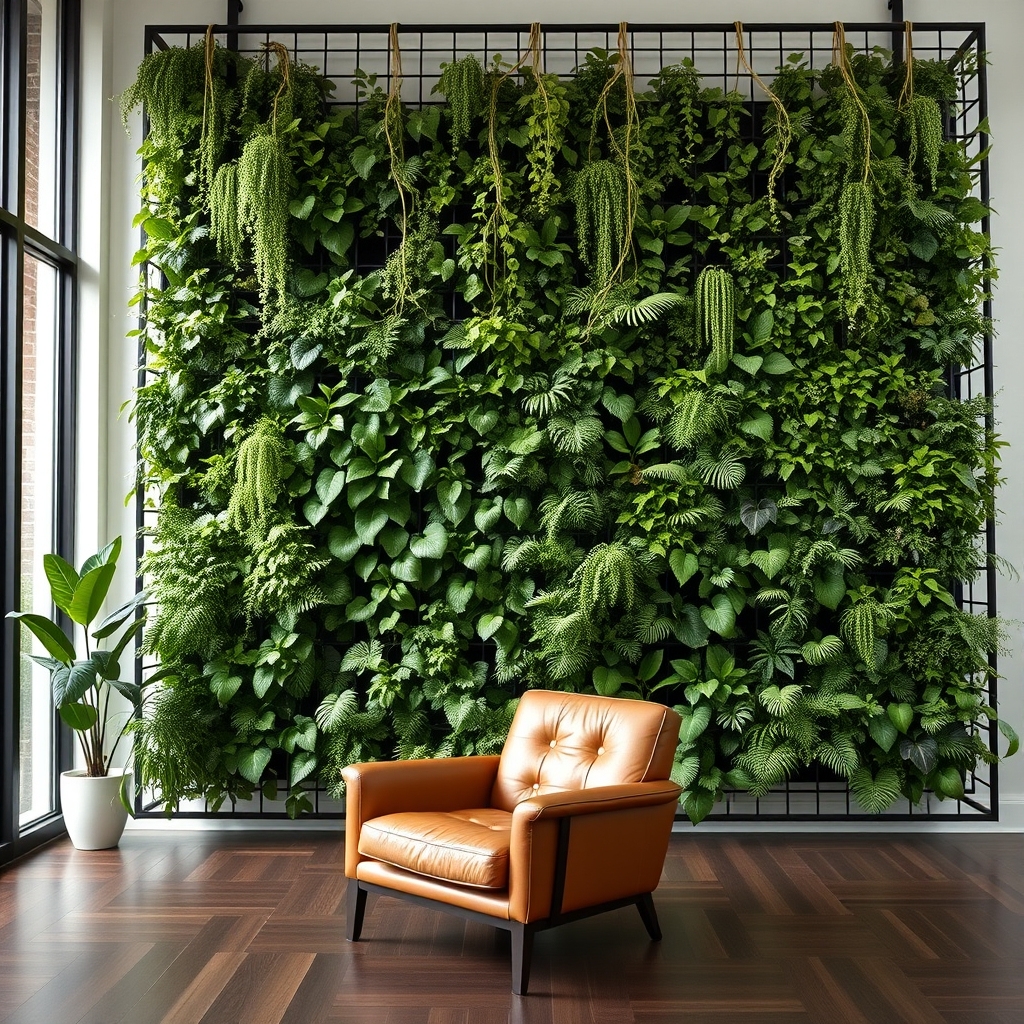
Vertical plant displays transform walls and unused vertical spaces into living works of art by arranging plants in upward-facing configurations.
These displays can take many forms, from mounted wall planters and hanging pocket gardens to tiered shelving systems and repurposed pallets.
Key characteristics:
- Plants arranged at different heights and levels
- Space-saving design that maximizes growing area
- Creates visual interest through layering and depth
- Can include both trailing and upright plants
- Often incorporates modular or stackable components
Unique features:
- Draws the eye upward, making rooms appear taller
- Provides greenery without sacrificing floor space
- Allows for creative plant combinations and patterns
- Can serve as natural room dividers
- Offers easier maintenance access through strategic placement
Common structures:
- Living walls with built-in irrigation
- Floating shelves with integrated planters
- Ladder-style plant stands
- Wall-mounted grid systems
- Hanging macramé plant holders
